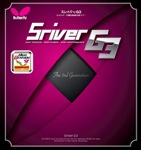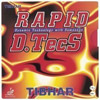Preparation for National Championships (part 2)
8 Maggio 2008 da Ping Pong Italia
by Massimo Costantini
Well, I wish that my short suggestions helped you as an outline in your work of physical conditioning. I received several e-mails from sportsmen that asked me a personalized training progamme, so I would like to thank them for this sort of preference.
Now we will talk about the approach to the table.
As we already said, many and different are our needs, that’s why I’ll resctrict myself to give you some general suggestions about the kind of play, the time to dedicate to the training, and as always, I’m available for any through analysis.
It’s very important to organize our time: only in this way we can reach a working method.
We have one month before the beginning of the championship, so we have enough time to prepare our 3 most important targets, that are:
1- Technique
2- Confidence in strokes
3- Confidence in the game
Every single training session is directed to the reaching of this 3 targets.
TECHNIQUE
How to proceed?
As we already said, we must try to share the training session according to our needs. It doesn’t matter how long you play every session, but suppose that it can last about 1h30’ – 2 hours every time you play.
The first thing to do is find a part of our play, a particular stroke, or a specific action, that doesn’t work well. To do this evaluation you must be very honest with yourselves.
Said like that, it seems trivial: you can affirm that there are so many things that don’t work, that you don’t have enough time to preparate them.
I believe that everyone of us has something that recurrently make us lose a point or the clearness, a mistake that constantly recurs. When we practice, we never think enough about our faults and difficulties. In fact, we want to train what we do easierly, what we instinctively do better, almost to convince ourselves that we can play those strokes very good, and show them to the others.
To improve our skills and step up to a higher level, from the technical point of view, we have to renounce something, even if just for a while. We must force ourselves to play even in less “comfortable” situations.
I give you a short, but useful rule: “What the instinct commends you to do, has absolutely no need to be trained, because it’s a part of you and of your being table tennis players”.
I give you an example from my 3 years experience as the men’s national team coach. You all know the exceptional Massimiliano Mondello’s backhand, a very risky and difficult stroke. Usually he plays it when he receives a long and non very tight push. This backhand allows him to earn 2-3 points every set. I never trained him on this kind of stroke, this specific such well built action, effective and organized, but purely instinctive action. It’s useless to train it: why train a stroke that comes naturally from your repertoire? I toke the same decision for Giardina’s counterspin and for Spinicchia’s block. For every guy with who I had the honour to work with, basicly there was one specific idea of every single kind of play and definite targets.
To close this concept, let’s resume the meaning of “training”: make a specific action in order that, changing it, it is possible to do it with more confidence and effectiveness. I guarantee that in the whole player’s career there is always something to improve, especially in table tennis.
One time we found our faults, we will prepare our training session playing 5-7 minutes for each exercise. This lapse of time is purely approximate: from my personal point of view is an average length to keep your concentration always ready and to remain in the limits of the physical effort that you’re doing.
This technical training keeps us busy for 1/3 of the whole training time.
After a specific work on a particular technical side, we have to organize our training session time to give a part of it to the confidence in strokes.
CONFIDENCE IN STROKES
How to proceed?
Let’s start considering which strokes are played with more attendance:
- Service 50%
- Receive 50%
- Flip (not often)
- Push (often)
- Forehand topspin (often) and backhand topspin (not often)
- Backhand blok (often) and forehand block (not often)
- Counterspin (occasionally)
- Smash (occasionally)
Let’s start ruling out what we don’t need. Countespin, for example: don’t spend too much time on a situation that sure, could happen, but that is not decisive in the mach. The smash on a high ball, even if occurs occasionally, is a stroke that you can’t mistake. That’s why I suggest to you to play it several minutes in every training session, but to pay to this stroke much attention, like in a real mach. Don’t think that you are good enough to evaluate a high ball as a simple situation, because the smash is not easy.
Let’s concentrate now on the other srokes. Make a specific work to train an action which involves a particular position of your body behind the table.
Now I’ll give you a trivial example, but anyway, in this phase you can ask your partner to give you the kind of ball that you would like to play. Let’s start from the service.
Play the service and ask your partner a receive that permits you to play a forehand topspin, or if you like it more, a push. Make sure that his receives are as more as possible similar one to each other, with almost no variations in spin and length on the table. The target of this simple exercise is to get used to control your position immediately after the service and at the same time to start the game. After your first topspin you can ask your partner to make a specific block (long-line, in the middle): in this way you can play one more offensive stroke, progressively in spin or power.
In this phase of the exercise we reach another target: we know where will the ball fall, and we get used to move consequently, in advance and correctly, that is to move with the right steps.
As I said, this is just an example, but you can invent many other situations: it will just be important to plan every single stroke, to reach enough confidence. Also for this part of the training we must play for 1/3 of the total time.
So, during our training session we tried to improve our technical side, then we tried to improve the confidence in the 4-5 strokes that we play more frequently in a mach. Now we must go thoroughly into the more tactic phase, that means put in the real game context the strokes that we trained analytically with specific exercises.
This kind of training will allow us to improve the confidence in our game, that is the last of our 3 targets.
CONFIDENCE IN THE GAME
How to proceed?
We gave 2/3 of the whole training session to the first 2 targets: we have just the final target left. Now we must make reference to what we have just trained and contextualize it in the game and in all its variables. In this moments, of course, we’ll play “all free” situations.
My suggestion is to reach by degrees a completely all free game.
For example, you can start with your service and tell your partner that you need the ball to return into a specific area of the table, so you can play a particular stroke, and then you’ll decide if you will also play the ball in a specific area of the table or if you’ll start an all free play. Why this way? Because we must remember that we must improve our potential of ideas, our plans. That’s why we must organize mentally a tactic idea starting from our service. It’s true, that mach is an unforseeable situation, but in any case the planning process of the strokes must be prepaired if you want it to realize.
We will end our training with an all free play, playing 2 services by side, and if you want, some maches too.
It’s not important to follow this plan for the entire month, but day by day we’ll have to adjust the time according to the results that we reached during the training.
We can say that this kind of training must be followed for 15-20 days. In 20 days I’ll come back to this topic to see how to refine your preparation in the close to the mach trainings.
Last but not the least, at the end of every training session ask yourselves if you gave the best of you, and the next time try to do something more than that.
I wish you a good training!
translation by Denisa Zancaner


Commenti
lascia un commento...
Non hai ancora un'avatar? allora dai un'occhiata quì...
Fai il login per inserire un commento.